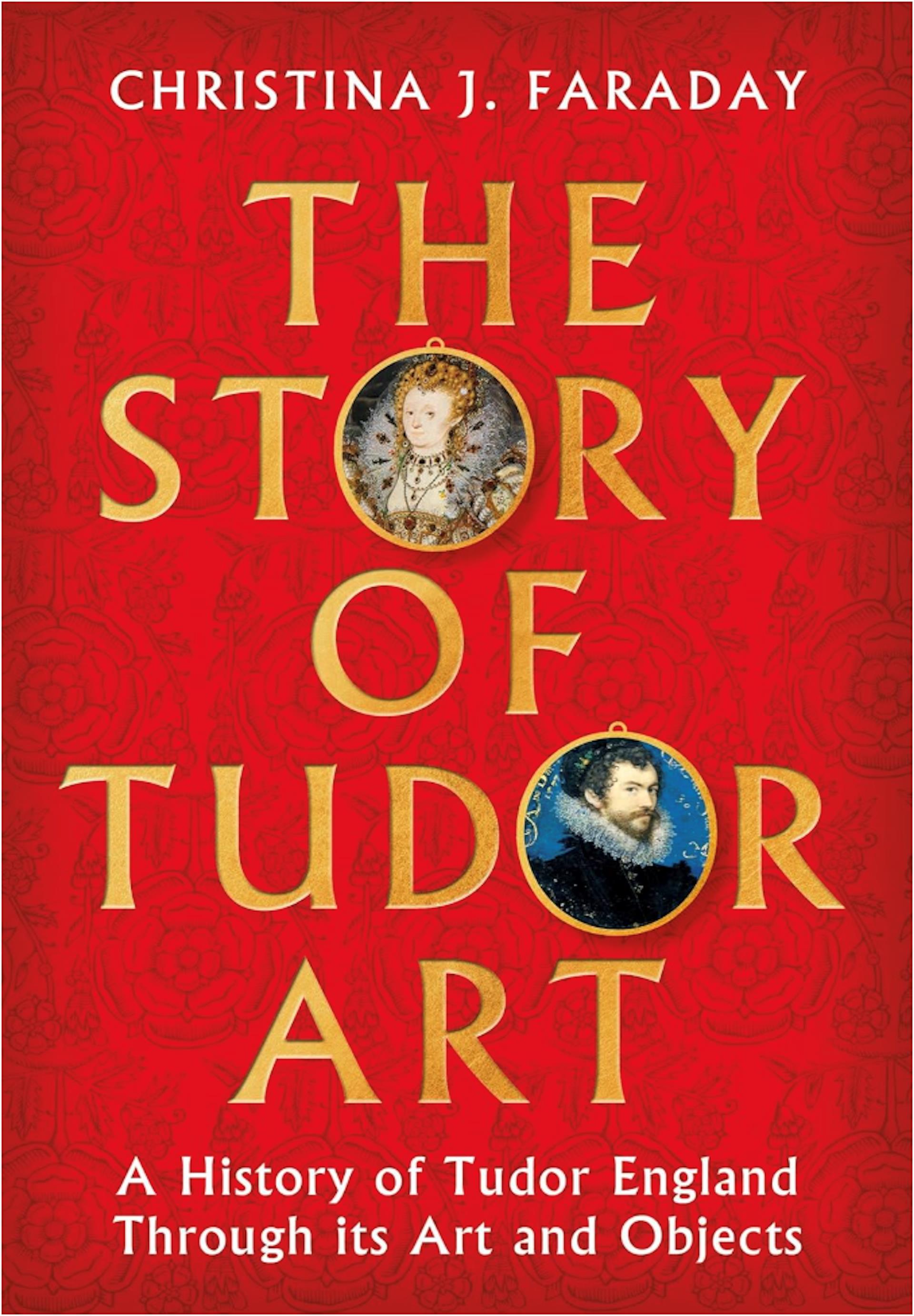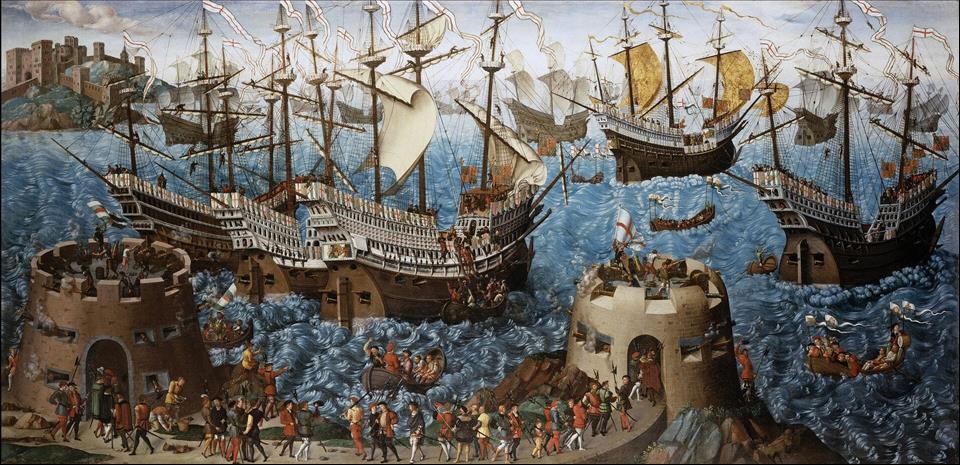
Often Overlooked, Tudor Art Richly Reflected A Turbulent Century Of Growth And Change
For a long time, narratives about the popular impetus behind the Reformation led some historians to believe art was unwelcome in Protestant England, for fear it would inspire people to commit idolatry.
Meanwhile, long-held scholarly prejudices towards easel paintings and sculptures (which, excepting portraits, are few and far between in Tudor England) and against“decorative” arts and household objects, reinforced the notion that the country was practically barren of visual art in the 16th century.
Happily, times are now changing. In the last few years, the period's beautiful and intriguing artworks have been receiving more attention in mainstream art history, not least in the New York Metropolitan Museum's 2022 exhibition The Tudors: Art and Majesty in Renaissance England.

Bloomsbury
Still, to date there has never been a comprehensive introduction to Tudor art aimed at the general public. My new book, The Story of Tudor Art will be the first to unite artworks and contexts across the whole of the “long Tudor century” , looking at the works of famous names like Hans Holbein the Younger and Nicholas Hilliard, but also beyond them, to interior furnishings, fashion and objects by unknown makers.
The book considers art made for the royal court, but also for increasing numbers of“middling” professionals, who embraced art and material objects to mark their new-found status in society.
Rather than appreciating art on purely aesthetic terms, Tudor viewers had practical expectations for the objects they owned and commissioned. Art was primarily a mode of communication, akin to speeches or the written word. Images had an advantage, however, as vision was considered the highest of the senses, exerting the greatest power over the mind.
Images could shape the viewer morally – for example, through exposure to long galleries full of portraits of the great and the good, where viewers could learn about them and emulate their virtues. But this shaping was also physical, as with stories of pregnant women who, viewing certain images, were thought to unconsciously shape the foetus in their womb, a phenomenon known as “maternal impression” .
Most casual observers probably recognise Holbein's magnificent portraits of Henry VIII , and some of Elizabeth I's many painted personae . But even for aficionados, artworks produced under Henry VII, Edward VI and Mary I remain relatively obscure. One of the book's aims is to draw attention to these overlooked periods, showing that even during the so-called mid-Tudor crisis (when England had four different rulers in just 11 years), art and architecture remained a priority for shaping narratives about individuals and institutions such as the Church.
A portrait of Henry VIII by Hans Holbein the Younger from 1537. Pictorial Press / Alamy
Henry VII emerges as a canny patron of visual arts, using various means to promote himself in his new role as king of England. Artists looked to legendary characters, ancient and recent, to bolster his tentative claim to the throne.
Popular legends originating in Geoffrey of Monmouth's (largely fabricated) “British history” , resurface in a genealogical manuscript in the British Library showing Henry VII's descent from Brutus, the legendary Trojan founder of Britain. This positions Henry as the Welsh messiah destined to rescue Britain from its Saxon invaders.
Architectural patronage at Westminster Abbey in London and King's College Chapel in Cambridge aligned him with his half-uncle and Lancastrian predecessor, Henry VI. Rumours of miracles had been swirling about him since his probable murder in 1471. Meanwhile, reforms to the coinage included the first accurate royal likeness on English coins, changing the generic face used by his predecessors into a recognisable portrait of Henry VII himself.
A gold coin showing the likeness of Henry VII. Photo 12 / Alamy
The Protestant monarch Edward VI and his regime passed the first official laws against religious images, resulting in the tearing down of religious images and icons in cathedrals and parish churches. But Edward VI's reign was not only a time of destruction. Under the influence of the two successive leaders of his council, elite patrons began to embrace classical architecture, a development that may relate to Protestant ideas about restoring the church to the time of Christ's apostles.
Edward's successor, Mary I, a staunch Catholic, made many attempts to undo the work of her Protestant-minded predecessor, including legislation to restore some church images. Perhaps more significantly, her marriage to Philip II of Spain brought England into closer artistic alignment with continental Europe. This saw a flood of artworks and artists associated with the Habsburg empire enter the country, including the first Titian portrait ever seen in England.
Due to the long neglect of Tudor art in mainstream art history, a vast amount of research remains to be done. Even within the better-studied reigns of Henry VIII and Elizabeth I, discoveries are waiting, and whole avenues of cultural and intellectual interpretation are yet to be explored.
Looking for something good? Cut through the noise with a carefully curated selection of the latest releases, live events and exhibitions, straight to your inbox every fortnight, on Fridays. Sign up here .
This article features references to a book that has been included for editorial reasons, and may contain links to bookshop. If you click on one of the links and go on to buy something from bookshop The Conversation UK may earn a commission.

Legal Disclaimer:
MENAFN provides the
information “as is” without warranty of any kind. We do not accept
any responsibility or liability for the accuracy, content, images,
videos, licenses, completeness, legality, or reliability of the information
contained in this article. If you have any complaints or copyright
issues related to this article, kindly contact the provider above.
Most popular stories
Market Research

- New Cryptocurrency Mutuum Finance (MUTM) Raises $15.8M As Phase 6 Reaches 40%
- Noveba Brings Apple Pay To Customers
- Mutuum Finance (MUTM) Approaches Next Phase With 14.3% Price Increase After Raising $16 Million
- Cregis And Kucoin Host Institutional Web3 Forum Discussing Industry Trends And Opportunities
- Primexbt Expands Crypto Futures With 101 New Coins, Delivering Best-In-Class Trading Conditions
- BTCC Exchange Announces Triple Global Workforce Expansion At TOKEN2049 Singapore To Power Web3 Evolution




















Comments
No comment